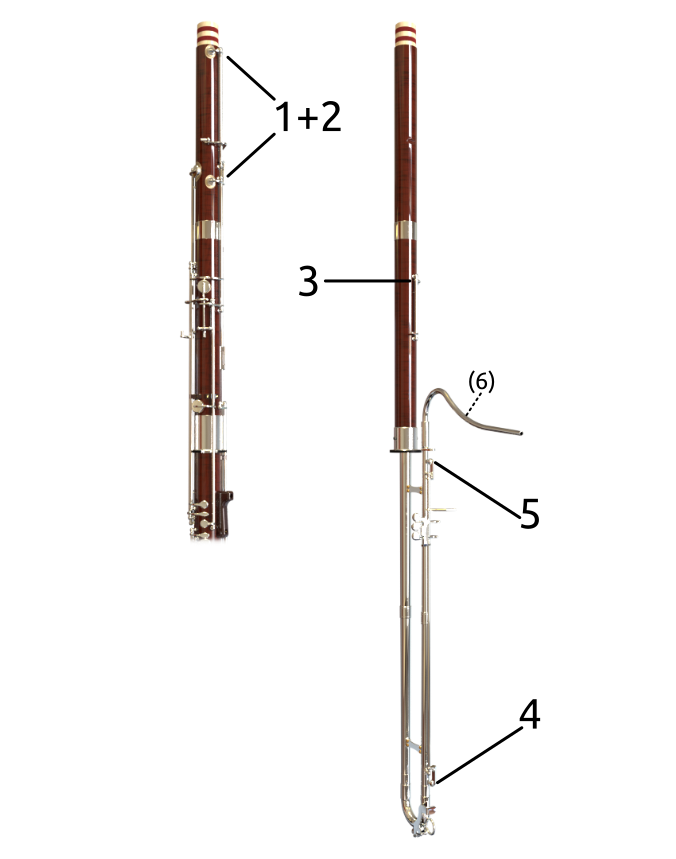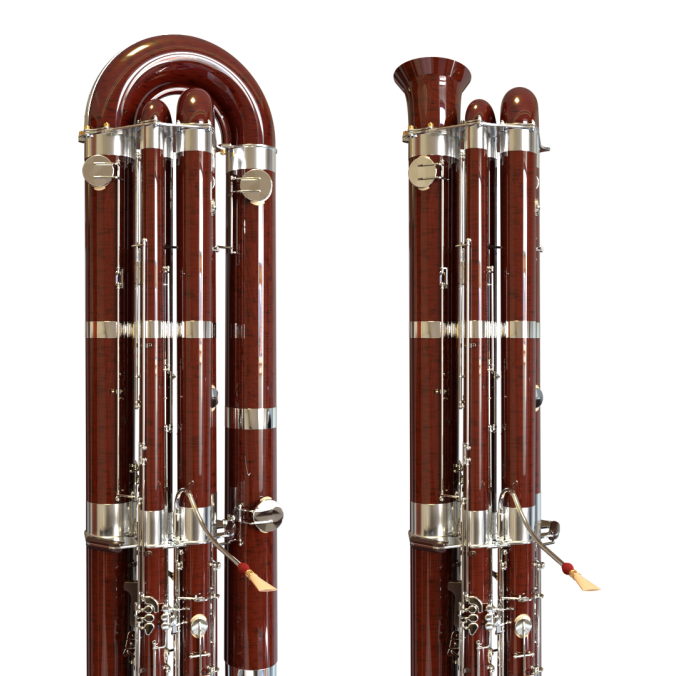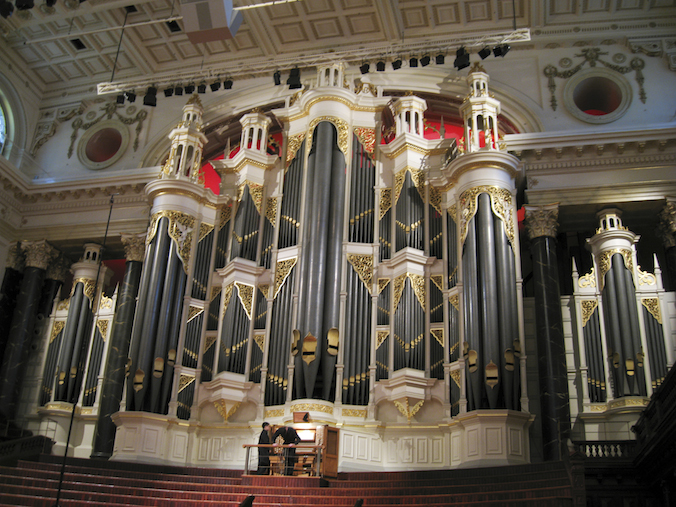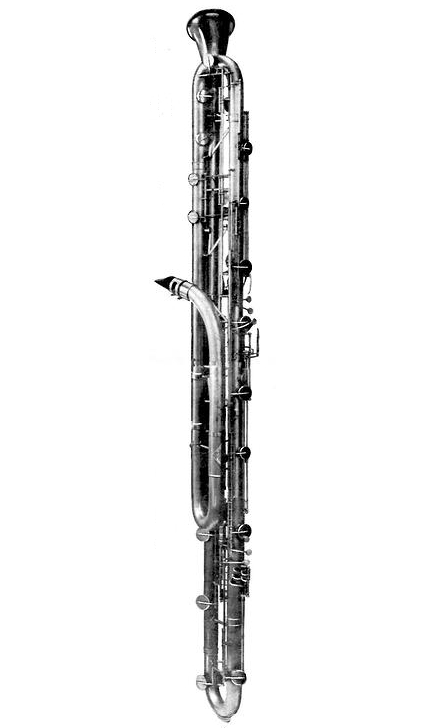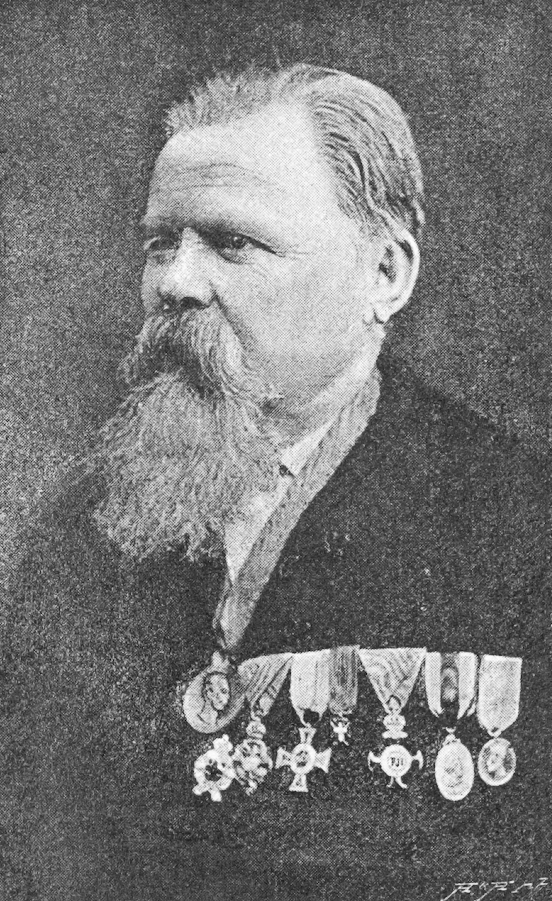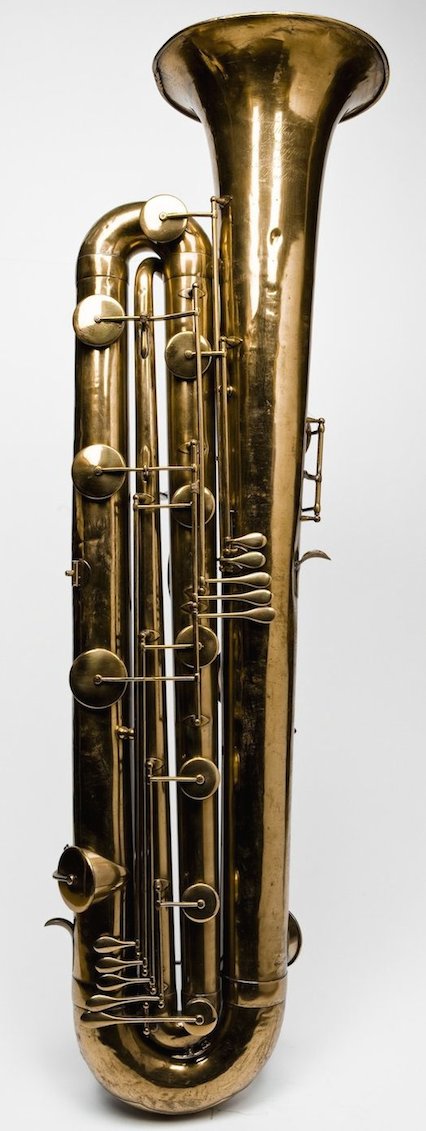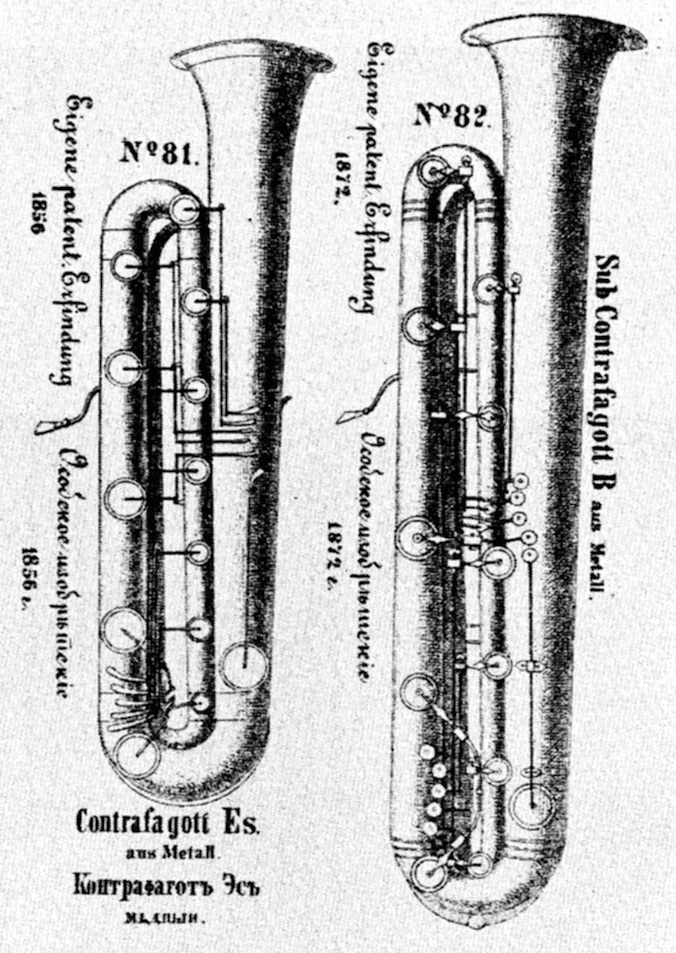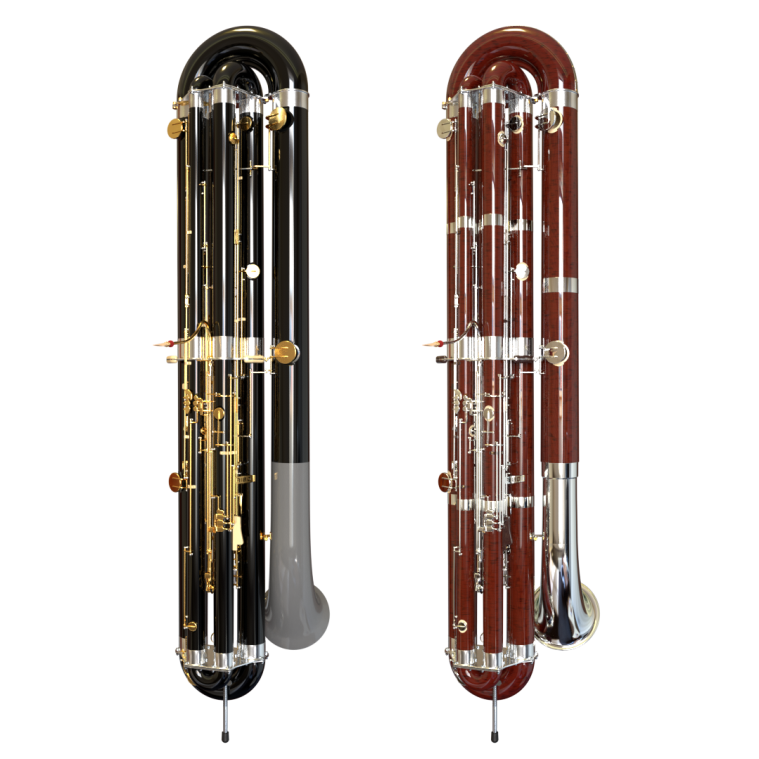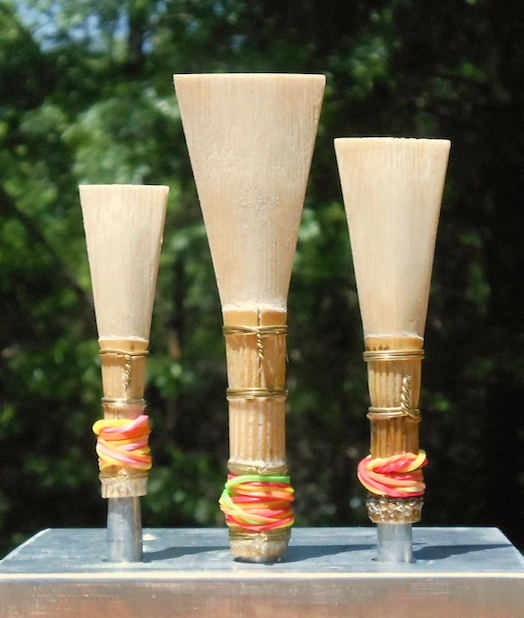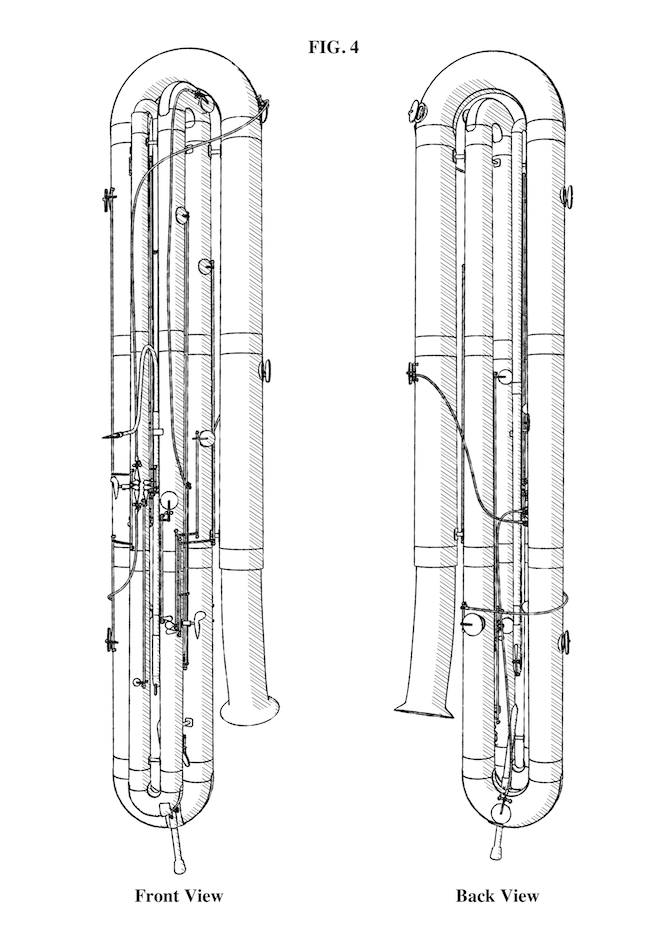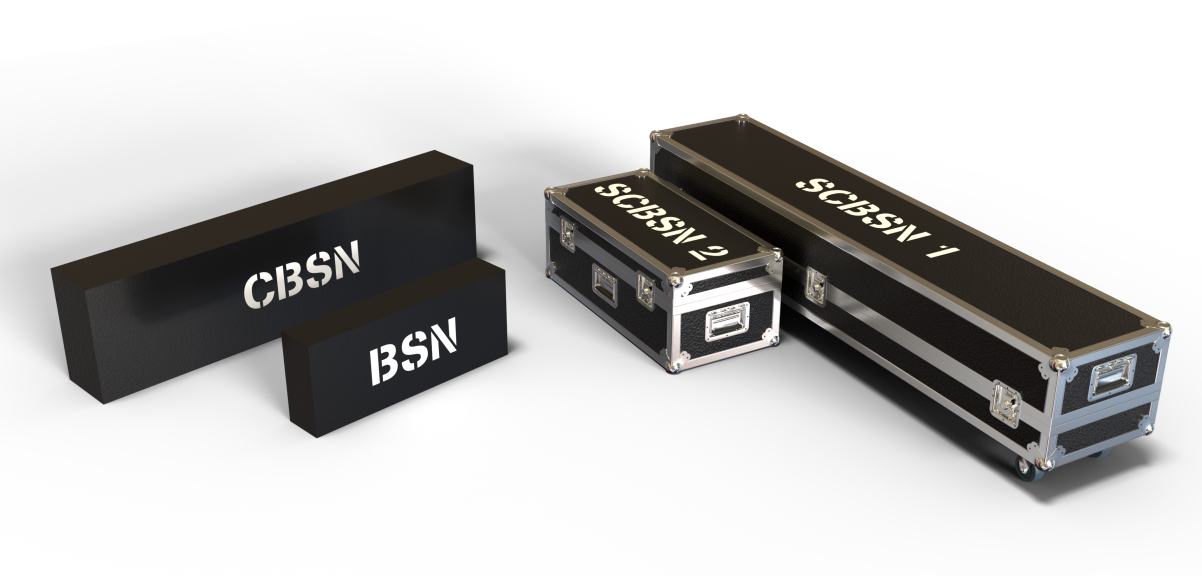-
Of the eighty-eight notes on a standard piano keyboard1, only the lowest three are in the subcontrabass register; the register from C0 to B0.

The subcontrabass register
*lowest note on piano
**lowest note on organ with 32′ stop
This has helped perpetuate an idea that the subcontrabass register is somehow unprecedented or without musical value. In fact, the subcontrabass register has long been a staple in music written for the one existing instrument capable of playing easily in that register: the organ. On the organ, groups of pipes intended to sound two octaves lower than written—and thus include the subcontrabass register—are termed 32′ stops due to the approximate length of tubing necessary to produce the lowest C. These low notes are important enough that even smaller organs without them often seek to emulate their sound digitally or with resultant tones.
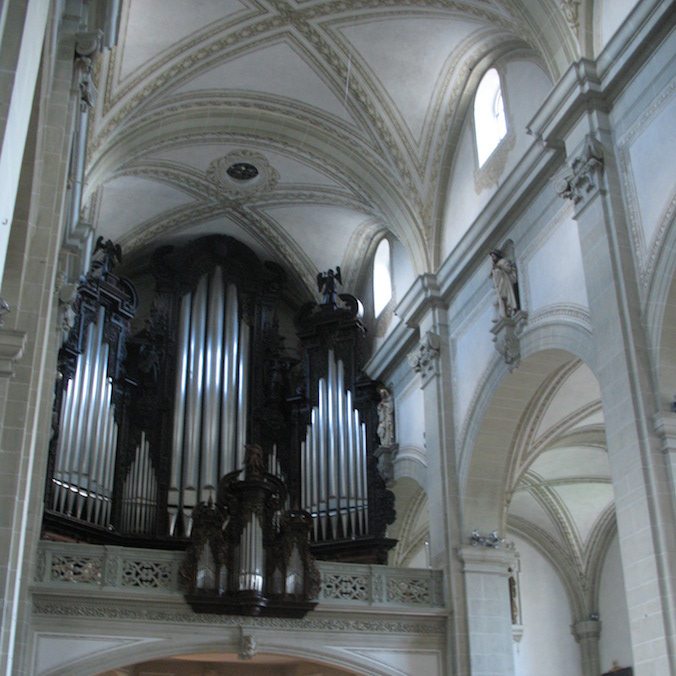
Built in 1650, the organ at the Church of St. Leodegar in Lucerne, Switzerland has a 32′ stop capable of playing down to C0.
(Picture by Andrew Bossi, 2007)
The organ is not, however, without its difficulties. The construction and installation (not to mention maintenance) of a large organ with 32′ stops can easily exceed US$ 1 million. Furthermore, once built, an organ can only be moved at an expense rivaling that of its initial construction, leaving any hall or performance space without an existing organ limited to digital imitations of often dubious quality. Taken together, all of this means that the subcontrabass register is quite often unavailable for any given performance.
In addressing this lack of subcontrabass instruments, the primary obstacle has been the limitations of human anatomy. The contrabass is already acoustically undersized to accomodate human height and tuned in fourths to accomodate human hand size.2 The standard contrabass tuba in C or B♭ is theoretically long enough to play the entirety of the subcontrabass register as pedal tones but—due to the limitations of human lungs and lips—can only do so with such difficulty and uncertainty as to render the register impractical.
Woodwind instruments can, however, be curved and wrapped where a string instrument cannot. Furthermore, they are generally more efficient than their brass counterparts regarding air consumption. The bassoon family, in specific, has a timbre rich in upper harmonics that helps the audibility of extremely low notes and a narrow taper lessening air consumption. Finally, the contrabassoon is already well-established as the woodwind family’s preeminent contrabass member. It is for these reasons that I believe the subcontrabassoon represents the best candidate to finally bring the subcontrabass register to the wider world.
1 The Austrian firm Bösendorfer and Australian firm Stuart & Sons currently sell pianos capable of playing the entirety of the subcontrabass register; down to C0.
2 The much-hyped octobass, an enormous contrabass played using a series of levers or pedals rather than directly with the fingers, is occasionally tuned down to C0. However, it was originally built with its lowest string tuned to C1, to play a full octave below the cello in a time period when that was not possible on a standard contrabass.
-
Originally, the goal sounding range of the subcontrabassoon was from A−1 to at least F2, using the same two octave keys as are present on a traditional contrabassoon. Playing tests on the Mk2 prototype have confirmed a increased range to A2 is easily accessible. Furthermore, the extraordinary length of the instrument enables an additional high harmonic key to be placed on the body of the instrument, further increasing the range to E♭3. This provides the subcontrabassoon with essentially the same written range as bassoon or contrabassoon.

The range of the subcontrabassoon
In choosing the low range of the subcontrabassoon, I was driven by a desire not to make a quasi-subcontrabassoon, but a true subcontrabassoon capable of playing a full octave below the contrabassoon. This left B♭ or A as the two possible lowest notes. I chose A over B♭ mostly as a way of future-proofing the design (Wolf’s contraforte features a range down to A and this extra note may very well become more common on contrabassoons in the future) and partially because A−1 has a nice, “round” frequency of exactly 13.75 Hz. (As opposed to B♭−1’s 14.5676… Hz.)1
The successfully-tested octave system includes five harmonic vents: vents #1 and #2 are operated by the automatic “half-hole” mechanism, vent #3 by the lower octave key, vent #4 by the upper octave key, and vent #5 by the high harmonic key (positioned as a palm key for the right hand). As on contrabassoon, the vents are all independent. While superficially inconvenient, this independence allows the vents to be used in a large variety of combinations, allowing the full range of the instrument to be sounded without burdening the instrument with excessive keys. An additional bocal vent (#6) was tested which increased the range even further to C4 or higher. However, I do not believe extending the subcontrabassoon into the oboe range justifies the additional complexity a bocal vent would bring.
An alternate low C bell will be included which allows the instrument to be placed in low C configuration. This appreciably reduces the weight and bulk of the instrument for situations where notes below C0 are not required.2
1 The fact that this will mean the subcontrabassoon clears the erroneously-reported low range of Leblanc’s octocontrabass clarinet by a semitone, thus becoming the lowest woodwind instrument ever made, is simply a very fortunate bonus.
2 Due to the form factor of the subcontrabassoon, there would not be any real practical advantage to a low B♭ bell; the resulting instrument would be just as tall and just as wide as the low A configuration.
-
Video Answer:
Text Answer:
The short answer is “no,” the lowest notes of the subcontrabassoon, despite their depth, are not too low to hear.
Various studies have reported the lower limit of human hearing as being anywhere between 12 Hz and 20 Hz. The most commonly cited limit is 20 Hz. As the fundamental frequency of the subcontrabassoon’s lowest note will be 13.75 Hz, this would superficially seem to suggest that the lowest notes of the subcontrabassoon would be too low to hear, at least for most people.
In truth, the fundamental frequency of a note is only a small component of the sound we hear. This is because when a column of air (or string) vibrates it does not vibrate only its full length (the full length producing the fundamental pitch). Instead, it also simultaneously vibrates in whole-number divisions (half, third, quarter, fifth, etc.) of that length.1 These whole-number divisions produce the overtones that give a sound its characteristic timbre and, together with the fundamental, complete the note’s harmonic spectrum. In the case of the subcontrabassoon, even though the fundamental may be at the edges of audibility, these overtones (and the bulk of the note’s harmonic spectrum) are well within hearing range.

Visualization of an air column vibrating in harmonics
“How does the inaudibility of the fundamental impact the sound of the lowest notes of the subcontrabassoon?”
Much less that you might guess. Below, you can listen to a pitch of A2 (110 Hz) played with a mix of overtones:
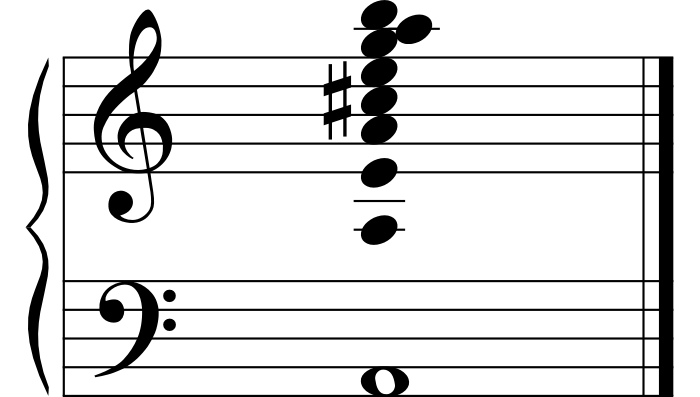
Here is the same pitch played without the overtones, a pure sine wave:

Finally, here is the same pitch played without the fundamental, only overtones:
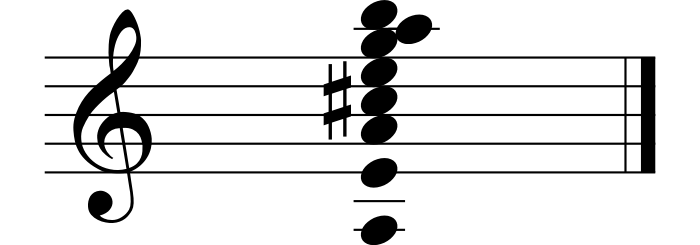
As can be heard, the third sample sounds very similar to the first, despite the fundamental not being present. In contrast, the second sample sounds completely different. In fact, if you are listening on a laptop, tablet, or mobile device you may not hear the second sample at all due to the speakers being too small to produce the fundamental pitch. (This would also mean that the first and third samples would sound virtually identical.) In summary, though the subcontrabassoon’s A−1 sounds slightly different to most of us than it would to someone capable of hearing down to 13.75 Hz, it still very much sounds like an A−1 and still very much sounds like a subcontrabassoon.
If you need further proof, there are no shortage of real recordings of the Mk2 prototype on my YouTube channel. (example below)
1 The clarinet family and other acoustically stopped pipes (i.e. most pan flutes) are slightly different in that they vibrate mostly in odd-numbered divisions (third, fifth, seventh, etc.) and are half as long as a flute, saxophone, oboe, or bassoon of the same pitch would be.
-
My first encounter with the concept of a subcontrabassoon came from my childhood copy of the Guinness Book of World Records. In it, there was a record for lowest musical instrument and three instruments were listed:
First was the Sydney Town Hall’s Grand Organ. As one of only two organs in the world ever built with a full-range, full-length 64′ stop it has a range down to C−1 (≈8.18 Hz).1
Next was Leblanc’s octocontrabass clarinet in B♭. It was built in the key of B♭ and had a sounding range down to C02. Only one, currently non-functional, example was ever built but the slightly higher octocontraalto clarinet in E♭—with a range to E♭0—has been recently recorded.3
As a budding bassoonist, it was the third instrument that most piqued my interest: a subkontrafagott4 built by one V. F. Červený with a reported range also down to B♭−1. Unfortunately, though Guinness was (mostly2) correct in the first two listings, the third was erroneous.
V. F. Červený was a very real Czech instrument maker who did indeed exhibit a subkontrafagott in the 1867 Paris World Exhibition and listed it for sale in his 1873 catalog. However, this instrument was neither an octave below the contrabassoon nor would it even be classified as part of the bassoon family today.
It is tempting to view historical musical instruments through the lens of the present; as a linear progression and gradual refinement of primitive forms eventually arriving at modern designs. However, much like biological evolution, the full story is full of odd “mutations” and dead-ends. By the 1800s, advancing technology had finally freed woodwind makers from the limited size of the human hand and experimentation was rife. Some of these experiments—like the saxophone and modern bass clarinet—caught on; many more—like the octavin and contrabass oboe—died out completely.
One instrument that did not fully succeed but nevertheless gained some limited traction was an instrument we now know as the contrebasse à anche.5 It was made of metal, built in the key of E♭, played with a large double-reed, and had a fingering scheme that was a mixture between the ophicleide and the piano. Yet despite its very unbassoonlike appearance, it was intended to take the place of the contrabassoon and directly competed with traditional contrabassoon designs. To this end, while some manufactures invented names for their own version of this instrument (tritonikon being particularly common), several manufacturers simply marketed it, at least occasionally, under the name contrabassoon or a translation thereof. Červený was one of these manufacturers; if you purchased a Červený kontrafagott you were purchasing a contrebasse à anche.
There was one significant difficulty in using a contrebasse à anche in place of a contrabassoon; range. A standard contrebasse à anche was built in the key of E♭ and had a range down to D1. The traditional contrabassoon, however, had a range to C1 or B♭0 at that time. It is for this reason that Červený presumably designed his subkontrafagott; pitched in the key of B♭ a fourth below the contrebasse à anche, it had a range down to A0 and covered the lowest notes of a traditional contrabassoon.
Though the contrebasse à anche survived well into the 1900s in a few places (Italy especially), Červený’s subkontrafagott never got off the ground. It is unclear if any instruments were actually built—other than the prototype exhibited in 1867—and any that were seem to have not survived. With no extant instruments it became nothing more than a rather confusing name and as early as 19136 Curt Sachs became possibly the first—but certainly not the last—writer to mistakingly attribute to it a range an octave below the contrabassoon.7
For a more thorough treatment of this very interesting period of contrabassoon history, see Jürgen Eppelsheim’s authoritative articles “Das Subkontrafagott” (Alta Musica, 1976, pp. 233–272) and “More Facts about the ‘Subkontrafagott‘” (The Galpin Society Journal, #32, pp. 104–114).
1 The other organ, Atlantic City’s Boardwalk Hall Auditorium Organ, actually had the capability of simulating a C−2 (≈4.09 Hz) using resultant tones.
2 The octocontrabass clarinet is most often reported as having keywork down to written C, giving it a sounding range to B♭−1. However, Gregg Bailey reports that Cyrille Mercandier, who has personally handled the LeBlanc Octocontrabass clarinet, confirms a sounding range to C0, written D.
3 Clarinetist Cyrille Mercadier’s YouTube video demonstrating the range of the octocontraalto clarinet.
4 Subkontrafagott being the German translation of subcontrabassoon.
5 A generic French term simply meaning “reed contrabass.”
6 Real-Leixcon der Musikinstrumente, 1913
7 The widespread confusion between B♭ and A as the lowest note of Červený’s subkontrafagott stems from an idiosyncrasy of the contrebasse à anche fingering scheme.
-
I designed the subcontrabassoon using traditional woodwind design principles in part so that it can eventually be made out of wood. Currently, however, the plan is for the prototype to be made of ASA, a high-quality, 3D-printable plastic.
-
The height of the subcontrabassoon, not including the adjustable end pin, will be 191cm/6′3″.
(Compare the contrabass at 182cm/6′0″.)
The end pin will provide an additional 24cm/9½″ of adjustment.
The weight of a wooden subcontrabassoon would be approximately 16kg/35lb.
(Compare the B♭ tuba at roughly 12kg/26lb.)
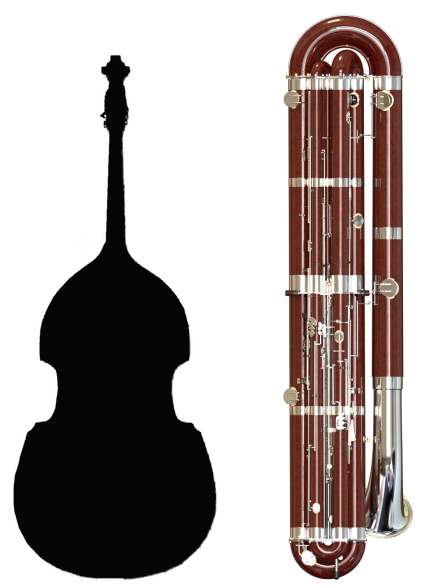
Contrabass and subcontrabassoon height comparison
Despite its larger size, the ergonomics of the subcontrabassoon have been designed to be as similar to the contrabassoon as possible. The bocal angle, bocal height, bocal projection, and vertical hand playing positions will all be identical to a standard contrabassoon.
In short, if you can play the contrabassoon, you will be able to play the subcontrabassoon.
-
Though finding ideal dimensions for a subcontrabassoon reed will doubtlessly be a gradual process, the initial prototype reeds are 84mm long and 27mm wide at the tip. The reeds are made from 35mm tube cane hand gouged to 1.65mm thick. I have also had promising results using more readily-available contraforte cane, albeit care must be taken to split the cane as wide as possible.
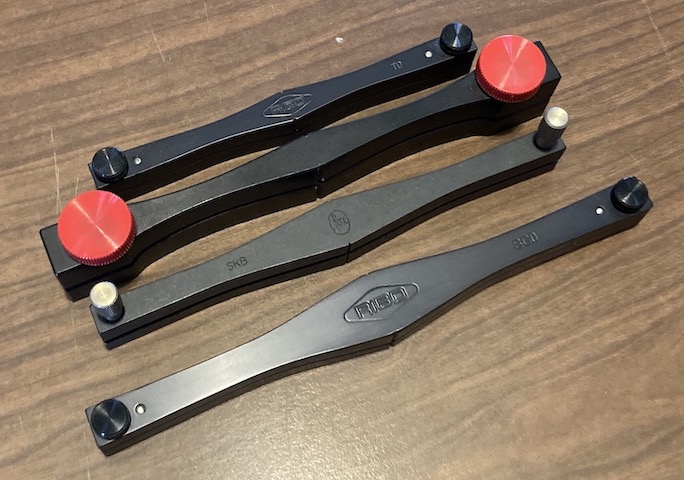
custom flat shapers for subcontrabassoon and tenoroon, alongside commercial bassoon and contrabassoon shapers
Custom reed tools are naturally possible. However, at present I have only completed a prototype flat shaper (made using a desktop CNC very much outside of its intended operating parameters). More reed information, including drawings and CAD files, can be found at the resources page.
-
In November 2014, shortly before going public with the subcontrabassoon project, I filed a provisional patent application in the United States. The scope of this application was the specific design of my prototype, not the concept of a subcontrabassoon itself. (I believe that the general concept of a subcontrabassoon is unpatentable.) My worst fear was that an unscrupulous company could apply for a patent on my design, tie me up in court, and possibly even prevent me from completing my own project. In filing a provisional patent application I sought to preemptively defend myself against such an attempt, unlikely as it might have been.
In November 2015, the time frame for converting my provisional patent application into a full patent lapsed. Securing a full patent is a very expensive process and I made the decision to focus my finite finances on the prototype itself. As a result, there is no legal obstacle preventing any person or company from building a subcontrabassoon based on my design.
-
Due to the complicated connections between joints, it will be necessary for the majority of the subcontrabassoon to remain assembled (à la contrabassoon) for storage and transport rather than disassmbled (à la bassoon). However, for easier transport and flexible performance options, the low A bell assembly is designed for quick and routine removal. This will result in the full instrument being split between two cases; one for the main instrument, and another for the low A bell assembly. The main case will be 190cm × 38cm × 30cm (74″ × 15″ × 12″), and the second 79cm × 38cm × 30cm (31″ × 15″ × 12″). When being played in low C configuration, only the main case will be necessary.
